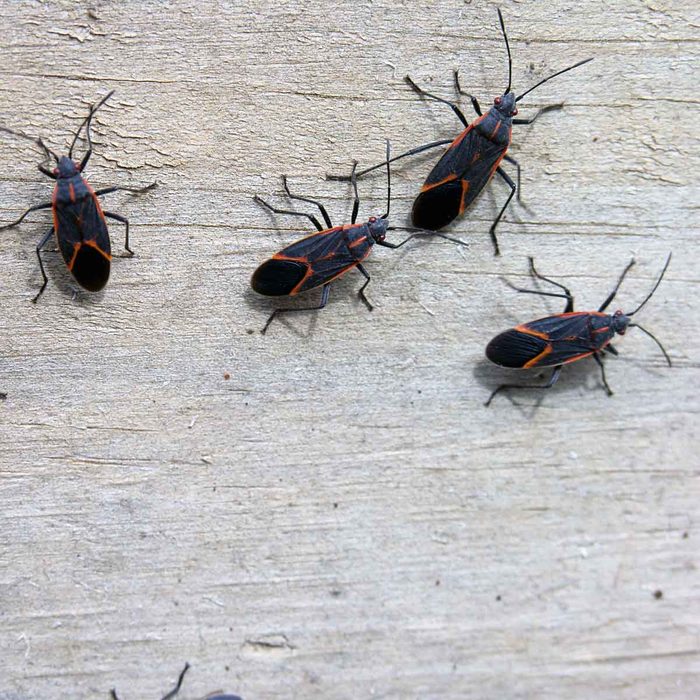Are Boxelder Bugs Dangerous to People, Pets and Property?
Updated: May 09, 2023

You know they're a nuisance, but can boxelder bugs bite? We'll answer that question, and more, regarding these red and black pests.
Related to cicadas, aphids, planthoppers, leafhoppers, bed bugs and shield bugs, boxelder bugs (Boisea trivittata) have a flat, elongated-oval shape with black and red-orange markings on their backs. They predominately feed on the seeds of the boxelder trees — hence their name — but can be found in and around maple and ash trees, too.
Boxelder bugs are not known to bite, although they can puncture the skin when provoked. On the rare occasion that one does chomp down, it can leave a small, irritating red mark that’s similar to a mosquito bite.
On This Page
Are Boxelder Bugs Dangerous to People?
Not really.
As noted above, boxelder bugs are capable of biting, but seldom do. They also don’t carry diseases. But they do emit a pungent odor when smashed, which is why they are often confused with their cousin, the stink bug (Halyomorpha halys).
Are Boxelder Bugs Dangerous to Pets?
Considered harmless, boxelder bugs have no venom and don’t sting. If your pet should happen to eat one, it will probably be the last time. Boxelders have a nasty taste that often makes dogs and cats vomit. Find out about the other pests that are dangerous to your pets.
Do Boxelder Bugs Damage Homes and Yards?
They can, but any damage is usually minor. Boxelder bugs dislike cold temperatures, so at the first sign of frost they seek refuge inside buildings where it’s warm and dry. Setting up shop in basements, between walls and on the sunny side of a house’s exterior, swarms can number into the thousands.
Once boxelders congregate inside a house, garage or shed, they tend to stain light-colored surfaces, drapes, upholstery and clothing with their fecal matter. Another downside: the smelly odor.
In the yard (spring and summer), there’s no evidence boxelder bugs do significant harm to vegetation and ornamental plants. But they do sometimes feed on fruit, causing roughed-up pits and skin dimpling.
What To Do if You Have Boxelder Bugs
As aggravating as they can be, boxelders don’t reproduce indoors, waiting until spring to lay their eggs in trees. So what should you do if you discover boxelders in your home or around your property? The National Pest Information Center recommends these steps:
- Wash bugs from outside walls with soapy water.
- Caulk or seal cracks and crevices.
- Install sweeps and weather stripping on doors.
- Put screens on windows and dryer vents.
- Vacuum or sweep up the bugs and dispose of them outdoors.
- Remove wood stacks, leaves, rocks and overgrown plants near your house.
- Rake up fallen seedpods below boxelder trees.
- Spray a low-toxicity pesticide (like diatomaceous earth) into infested female (seed-bearing) boxelder trees in the spring to eliminate the newly-hatched nymphs.




















